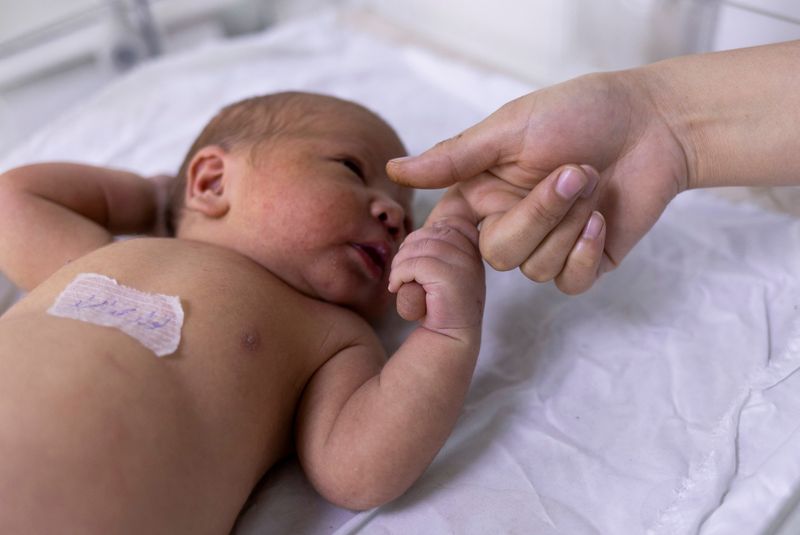NEW YORK (Reuters) -A team of Australian researchers have identified a biochemical marker in the blood that could help identify newborn babies at risk for sudden infant death syndrome (SIDS), a breakthrough they said creates an avenue to future tragedy-preventing interventions.
The researchers, in a study published in The Lancet’s eBio Medicine https://www.sciencedirect.com/science/article/pii/S2352396422002225, found that babies who died of SIDS had lower levels of an enzyme called butyrylcholinesterase (BChE) shortly after birth. BChE plays a major role in the brain’s arousal pathway, and low levels would reduce a sleeping infant’s ability to wake up or respond to its environment.
This is the first evidence “that babies who succumb to SIDS are different from birth,” study leader Dr. Carmel Harrington of The Children’s Hospital at Westmead in Australia told Reuters by email.
“An apparently healthy baby going to sleep and not waking up is every parent’s nightmare,” she said.
The enzyme abnormality is “a measurable, specific vulnerability” to SIDS that had not been previously recognized, researchers said in the published study.
The Sydney Children’s Hospital Network in Australia called the discovery “a world-first breakthrough.”
But researchers are “only halfway” to the goal of fully understanding SIDS and being able to prevent it, other experts said on Saturday in The New England Journal of Medicine https://www.nejm.org/doi/full/10.1056/NEJMp2119221 (NEJM).
They warn that preventive practices such as having babies sleep on their backs and keeping cribs bare must continue.
Dr. Richard Goldstein of Children’s Hospital in Boston, lead author of the NEJM editorial, said the new study is very good, but “it should not change that behavior.”
Using dried blood spots taken at birth as part of a newborn screening program, the researchers compared BChE levels in 26 babies who later died of SIDS, 41 infants who died of other causes, and 655 surviving infants.
The fact that levels of the enzyme were on average significantly lower in the infants who died of SIDS suggests the SIDS babies were inherently vulnerable to dysfunction of the autonomic nervous system, which controls unconscious and involuntary functions in the body, the researchers said.
A failure to wake up when appropriate “has long been considered a key component of an infant’s vulnerability” to SIDS, her team said, adding that further research “needs to be undertaken with urgency” to determine whether routine measurement of BChE could potentially help prevent future SIDS deaths.
Even if BChE is confirmed to play a role, “it’s not going to be the whole solution,” Goldstein said.
Research has implicated other possible biologic contributers, such as genetics, maternal smoking, and abnormal levels of the nervous system signaling chemical serotonin.
Harrington, who lost her own child to SIDS 29 years ago, has dedicated her career to researching the condition.
“There is a lot more work to do,” she said. “We expect the next stages of research will take between 3-5 years.”
(Reporting by Nancy Lapid; Editing by Caroline Humer and Bill Berkrot)























